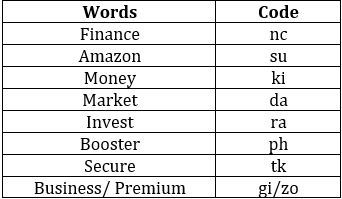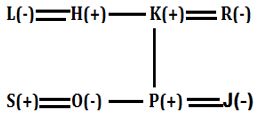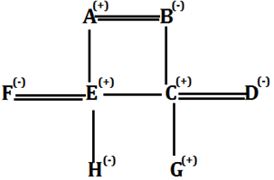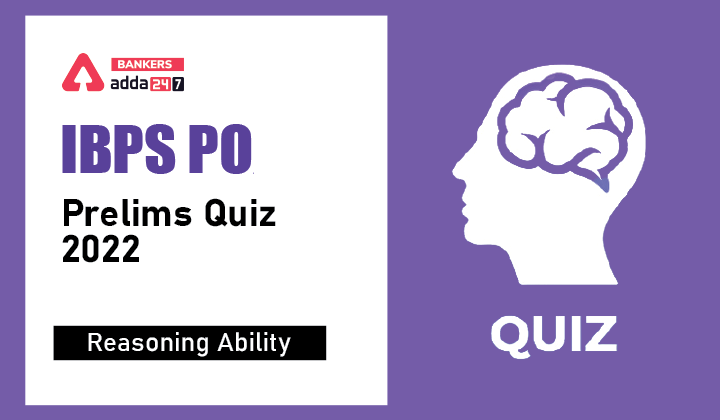Directions (1-5): Study the following information to answer the given question. In a certain code language,
‘Finance amazon money market’ is written as ‘su da nc ki’,
‘Invest market booster secure’ is written as ‘ph ra tk da’,
‘Premium secure money business’ is written as ‘tk gi ki zo’,
‘Business premium booster finance’ is written as ‘zo nc ph gi’.
Q1. What is the code for ‘amazon’?
(a) da
(b) su
(c) nc
(d) ki
(e) Cannot be determined
Q2. Which of the following is the code for ‘invest business money’?
(a) zo ra ki
(b) ra su mo
(c) tk su ra
(d) ki ra gi
(e) Cannot be determine
Q3. What does ‘ph’ stand for?
(a) finance
(b) business
(c) automobile
(d) booster
(e) Cannot be determined
Q4. Which of the following is represented by the code ‘da ph nc’?
(a) Booster secure finance
(b) finance market premium
(c) finance market booster
(d) booster invest secure
(e) None of these
Q5. Which of the following may be the possible code for ‘team amazon premium market’?
(a) su ye ph da
(b) mo gi da su
(c) da su mo ph
(d) tk ye su da
(e) None of these
Direction (6-8): Read all the information carefully and answer the given questions:
Eight persons H, J, K, L, R, O, S, P of a family going for vacation. There are four married couples and two generations in the family. S who is the brother-in-law of P is going with his wife O. H is the paternal uncle of P. L is the sister-in-law of R and going with her nephew P. J is the sister-in-law of O. The husband of R has two children. S is son-in-law of R’s husband.
Q6. How is K related to J?
(a) Daughter
(b) Father
(c) Mother
(d) Daughter-in-law
(e) None of these
Q7. How is R related to O?
(a) Aunt
(b) Father-in-law
(c) Mother
(d) Uncle
(e) None of these
Q8. How is H related to R?
(a) Brother
(b) Brother-in-law
(c) Mother-in-law
(d) Father-in-law
(e) None of these
Directions (9–10): Study the following information carefully and answer the questions given below.
There are eight member- A, B, C, D, E, F, G and H in a family with three generation. D is mother of G. H is niece of C. A is father of E. B has only two married sons. G is grandson of B. F is sister-in-law of C who is father of G. A is not married to F.
Q9. Who among the following is mother of H?
(a) F
(b) C
(c) B
(d) C
(e) G
Q10. Who among the following is nephew of E?
(a) D
(b) F
(c) G
(d) H
(e) C
Directions (11-15): In the following questions, the symbols @, #, $, ⋆ and © are used with different meanings as explained below:
‘A @ B’ means ‘A is neither smaller than nor equal to B’.
‘A # B’ means ‘A is not greater than B’.
‘A $ B’ means ‘A is neither greater than nor equal to B’.
‘A % B’ means ‘A is neither greater than nor smaller than B.
‘A © B’ means ‘A is not smaller than B’.
Assuming the above statements to be true, you have to decide which of the conclusions is/are definitely true and then mark your answer accordingly.
Q11. Statement: F @ J, J # R, R % L, L © M
Conclusions: I. F $ R
II. M # R
III. M © J
(a) None is true
(b) Only I is true
(c) Only II is true
(d) Only either II or III is true
(e) All are true
Q12. Statement: T # W, W $ Q, Q © D, D @ J
Conclusions: I. J $ T
II. T # J
III. T $ Q
(a) Only I and III are true
(b) Only either I or II is true
(c) Only II and III are true
(d) Only III and either I or II are true
(e) None of these
Q13. Statement: L # V, V $ E, E © U, U @ B
Conclusions: I. B $ E
II. L $ E
III. B % L
(a) Only I and II are true
(b) Only III is true
(c) Only either I or II is true
(d) All are true
(e) None of these
Q14. Statement: M $ T, T $ R, R @ H, H # G
Conclusions: I. M $ H
II. R @ G
III. M # R
(a) Only I is true
(b) Only II is true
(c) Only III is true
(d) All are true
(e) None is true
Q15. Statement: H © R, R @ W, W % F, J $ F
Conclusions: I. H @ F
II. J $ W
III. R @ J
(a) Only I and II are true
(b) Only II and III are true
(c) Only III is true
(d) Only either I or III is true
(e) All are true
Solutions
Solutions (1-5):
Sol.

S1. Ans. (b)
S2. Ans. (e)
S3. Ans. (d)
S4. Ans. (c)
S5. Ans. (b)
Solutions (6-8):
Sol.

S6. Ans. (e)
S7. Ans. (c)
S8. Ans. (b)
Solution (9-10):
Sol.

S9. Ans. (a)
S10. Ans. (c)
S11. Ans. (c)
S12. Ans. (d)
S13. Ans. (a)
S14. Ans. (e)
S15. Ans. (e)





 GA Capsule for SBI Clerk Mains 2025, Dow...
GA Capsule for SBI Clerk Mains 2025, Dow...
 The Hindu Review October 2022: Download ...
The Hindu Review October 2022: Download ...
 IBPS Clerk Mains Cut Off 2025, Check Sta...
IBPS Clerk Mains Cut Off 2025, Check Sta...







